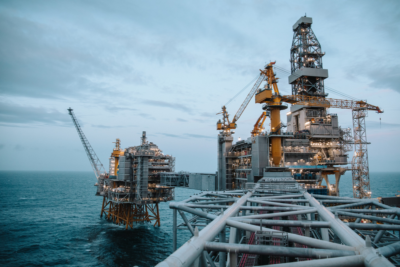Norway’s giant offshore oil field Johan Sverdrup narrowly avoided having to shut down production after mediation ended a 10-day strike by offshore workers just before the weekend. The strike had been set to expand, threatening Sverdrup’s production in addition to that on six other platforms.

Nearly a quarter of all total oil and gas production on the Norwegian continental shelf could have been halted if the offshore workers organized through the labour union Lederne had opted to remain on strike, noted employers’ organization Norsk olje- og gass (Norwegian Oil and Gas Association, NOG).
The Lederne union had given notice on Thursday that its expansion of the strike would also shut down the platforms on the Oseberg South and East fields plus Kristin and Tyrihans on Sunday (October 11). All are operated by Norway’s state oil and energy company Equinor, which in turn warned that Johan Sverdrup would have to halt production from October 14. The Maria field, operated by Winershall Dea Norge, would also need to shut down because it’s tied to the Kristin field, while ConocoPhillips planned to shut down portions of the venerable Ekofisk field.
All told, it would have cut production by 966,000 barrels of oil equivalents a day at a huge cost to the state treasury, while also disrutpting gas deliveries to the European continent as temperatures begin to fall.
Called in to mediation
The workers’ and employers’ organizations, however, were ultimately called back in to the state mediator’s office on Friday. Nearly nine hours later they reached an agreement and the strike was called off.
“We’re pleased with the result,” Kolbjørn Andreassen, information chief at the employers’ organization, told state broadcaster NRK Friday evening. “Now activity on the installations hit by the strike can resume as quickly as possible.”
Oil prices fell just over 1.5 percent on the news that production would start up again. The initial strike cut production by 8 percent and that increased later to around 12 percent.
‘Had hoped to achieve more…’
Union leader Audun Ingvartsen also seemed satisfied after the strike that had pulled 169 members of Lederne off the job. He told NRK that the new agreement “takes care of the members,” without going into more details that are due to be settled through negotiations next spring.
“We’ll use the time until April 1 to put in place part-two of the agreement, a new labour contract for personnel on land,” Ingvartsen said. He conceded that it won’t involve any real wage hike. “We follow the industry,” he told NRK. “We had hoped to achieve more, but won’t get anything extra out of this.”
The core disagreement has been over whether offshore contracts that often involve premium pay would still apply for members of Lederne who are transferred back to the mainland, where new technology allows them to work in control rooms that operate the rigs remotely. The employers’ group said the agreement involves the same general increase of NOK 4,700 already accepted by other unions on September 30.
Both Equinor and Wintershall, meanwhile, said production would start cranking up immediately, throughout the weekend.
NewsInEnglish.no/Nina Berglund

